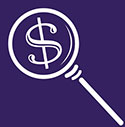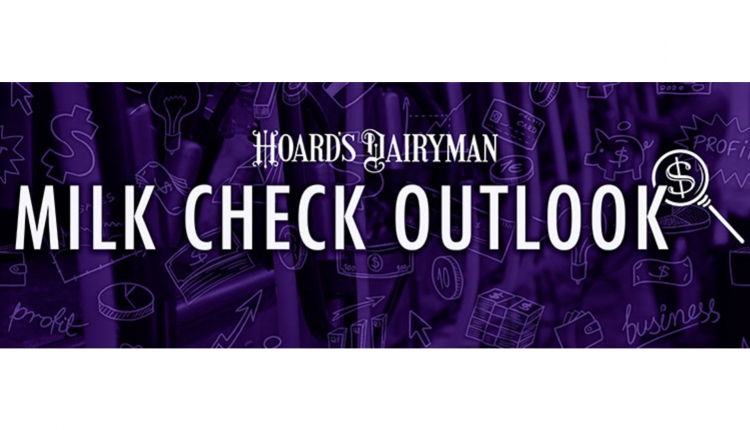The author is the director of dairy market insight with StoneX Group Inc.

At the start of 2025, market sentiment and supply and demand risks are tilted toward the downside, but I think we’ll see decent milk prices and margins for dairy farmers despite the risks.
The industry is concerned about new cheese capacity coming online, milk production growing, mixed signals on domestic demand, and the possibility of trade wars that could dent exports. On the bullish side of the ledger is the continued tight supply of heifers, relatively bullish global butter and cheese markets, and the fact that trade disputes had only mild impacts on U.S. dairy prices in the past.
The production picture
One of the biggest points of discussion over the past year or more has been the new cheese plant capacity that would be coming online between the fourth quarter of 2024 and the middle of 2025. If all new plants ran at full capacity and all existing plants continued to run at their current rate, we would see U.S. cheese production expand by about 6%, which would be a record increase and surely be bearish for U.S. prices.
Knowing that this new capacity is coming, cheesemakers have been cautious about overproducing during 2024. January to November cheese production was up 0.4% while domestic disappearance was up 0.3%, and exports were up almost 18%. That resulted in cheese stocks being down more than 7% (104 million pounds) from the prior year in November. The bad news here is that domestic disappearance was poor, up 0.3% compared to the long-run average of 2.5% greater. But the good news for dairy farmers is that we’re coming into 2025 with tight inventories and cheesemakers have been cautious about overproducing.
I think the most important thing to watch is milk production. Highly pathogenic avian influenza (HPAI) had a surprisingly large and negative impact on California’s milk production in the fourth quarter of 2024, but if we strip out California, milk production in the rest of the country was up 1.2%. Farmers added 34,000 dairy cows to the U.S. herd between July and December. Good milk prices and relatively low feed costs in the second half of 2024 pushed margins up to profitable levels for most dairy farms, which typically boosts milk production three to six months later. So, the underlying trend is toward stronger milk production as we move through 2025. Once you adjust for the likely boost in fat and protein content in the milk, I’m forecasting 2025 milk solids to be up 1.7%, which isn’t an excessive amount of milk, but it would be the strongest growth that we’ve seen since 2021.
The tempering factors for milk production are the lack of heifers and HPAI. While we’ve added 34,000 dairy cows to the herd in the past six months, more than half of those have been in states with new cheese plant capacity. My guess is farmers were planning their expansions for a few years and had time to raise enough heifers to fill those barns themselves. If farmers haven’t planned ahead for expansion, heifers are still expensive and supply is limited.
The other limiting factor could be HPAI. A few months ago, I wasn’t terribly concerned about HPAI impact on milk production. We saw it rip through Texas, Idaho, and Colorado and only reduce milk yields by 1% to 3% for two to three months before the cows rebounded. However, it knocked California back by more than 9% in November, and it looks like it will take five months or more to rebound. We’re not sure why the impact in California was so much larger than other states, but if it spreads to other large milk sheds like the Upper Midwest or the Northeast and the impact is similar to California, that could really limit milk production growth in 2025.
Demand may be a concern
U.S. domestic demand was a mixed bag across commodities and sales channels in 2024. Total domestic cheese usage was basically flat, but retail cheese sales were up about 3%, which suggests the use of cheese in food service and processed foods, like frozen pizza, was down by 2% to 3%. It also looks like the direct use of cream in food service and processed foods/baked goods was down about 2.5% during the second half of 2024, after growing strongly since 2020. Paradoxically, it looks like food service/processed food use of butter was up sharply in 2024 with 6% greater total butter usage, although retail sales were only up about 2.4%. When I convert everything onto a milk equivalent basis, total domestic consumption of milk solids was up about 1.2% for 2024. If consumption continues to run at that pace and production rises to 1.7% growth, the market starts to look bearish unless we can export the surplus.
Trade wars are a bearish risk, but they may not be as worrisome as some think. When Mexico put additional tariffs on U.S. cheese in 2018, our exports to Mexico were basically flat over the following months — there wasn’t a large drop. U.S. cheese enters Mexico at a 0% tariff under United States-Mexico-Canada Agreement (USMCA), while most of our competitors face a 20% or 25% tariff. So, if Mexico puts a 20% to 25% tariff on U.S. product, it can bring us up to even footing with other exporters. However, we have a transportation and logistics advantage, plus U.S. cheese prices are currently the cheapest across the major exporters like they were in 2018.
When China put additional tariffs on U.S. dairy products in 2018, we did see exports to China drop, but we made up for it with more shipments into other countries. Talk about trade wars is helping to add some bearish sentiment to the market, but depending on how different factors line up, it might not have much negative impact on the markets. It’s also possible the government could step in and buy dairy commodities to offset any negative impacts that could potentially push the market higher.
With milk production growing and domestic demand running weaker than average, I believe U.S. cheese and butter prices in 2025 will average lower than in 2024, but it won’t be a complete washout.




